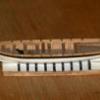
TomShipModel
-
Posts
289 -
Joined
-
Last visited
Reputation Activity
-
 TomShipModel got a reaction from mtaylor in HMS Leopard by toms10 - FINISHED - 1:85 scale POF/POB
TomShipModel got a reaction from mtaylor in HMS Leopard by toms10 - FINISHED - 1:85 scale POF/POB
Yes, this is used to prep the canvas for painting. I do use it for setting knots as well. However, on caution is that for black and dark brown rigging it does give a bit of a white haze on the line. I typically use dilute white glue to set knots on dark colored line. As you had mentioned, for me, the only use for cyano on rigging is to point the line to run it through a block. Cyano just makes rigging too brittle and the stretching and slackening of line due to temperature and humidity changes could (an in my case does) break the line at the interface between the cyano hardened line on the rest of it.
-
 TomShipModel got a reaction from mtaylor in HMS Leopard by toms10 - FINISHED - 1:85 scale POF/POB
TomShipModel got a reaction from mtaylor in HMS Leopard by toms10 - FINISHED - 1:85 scale POF/POB
Well done Tom. Maybe I'll get to see it up close in New London in October.
Tom
-
 TomShipModel got a reaction from toms10 in HMS Leopard by toms10 - FINISHED - 1:85 scale POF/POB
TomShipModel got a reaction from toms10 in HMS Leopard by toms10 - FINISHED - 1:85 scale POF/POB
Well done Tom. Maybe I'll get to see it up close in New London in October.
Tom
-
 TomShipModel reacted to toms10 in HMS Leopard by toms10 - FINISHED - 1:85 scale POF/POB
TomShipModel reacted to toms10 in HMS Leopard by toms10 - FINISHED - 1:85 scale POF/POB
Hi everyone
Here is a little more sail work. I ended up going with the darker bolt ropes. There were cases for both light and dark. After making a couple small sails with the running rigging color I could barely see the rope on the sail. The color was too close to the sail. Including the cringles it was a lot of work that would basically go unnoticed. I leaned toward the more artistic side where the “ordinary” non-modeling person would appreciate the work. Neither one seemed to be wrong from the research I did.
Here is how I did the cringles. The head cringles is just a loop with a simple knot at the base to hold it firm. The leech cringles were done by piercing 2 holes first.
Second, the bolt rope was glued in place from the head down to the first cringle hole. From that point the bolt rope was just laid in place.
I then ran a 50 wt thread through the first hole with a very small sewing needle and tied a simple knot over the bolt rope to hold it in place and start the cringle. Repeat for the second hole.
I then took a straight dental pick and pushed it in between the sail edge and bolt rope to form the cringle. Then glued the bolt rope to the edge of the sail up to the next cringle hole and repeated the whole process for the next cringle.
I glued all the knots with Liquitex matte medium to hold them and allow me to trim them very close.
Here is a close up of the results. It is a bit tedious but I like the results and at 1:85 scale that is about as real as it is going to get; st least for the capabilities of this modeler. 😜
This may rank up there with tying rat lines!
Tom
-
 TomShipModel got a reaction from mtaylor in HMS Leopard by toms10 - FINISHED - 1:85 scale POF/POB
TomShipModel got a reaction from mtaylor in HMS Leopard by toms10 - FINISHED - 1:85 scale POF/POB
That would be great. The person who put this silk span method into shop notes was the late John Wisner, a member of the Connecticut Club.
-
 TomShipModel got a reaction from Bluto 1790 in HMS Leopard by toms10 - FINISHED - 1:85 scale POF/POB
TomShipModel got a reaction from Bluto 1790 in HMS Leopard by toms10 - FINISHED - 1:85 scale POF/POB
Your model is excellent. Since you are going to bend sails, a very good reference is "Seamanship in the Age of Sail" by John Harland. I am not a sailor, and this book will help you to enhance realism. For example, a ship like yours did have 37 total sails. However, they were never all set. The reason is that they would blanket each other and be counterproductive. So, stay sails would be set if a ship was sailing close to the wind. However, in that sitution some of the square sails would not be set and those that were would have their yards braced to the extreme. Also, studding sails were normally not set on both ends of the yard. They would be set on one side or the other and normally not bent at all. The only documented case of a ship having every sail set was when Constitution was becalmed when it was being chased by a British Squadron. The ship was being towed/kedged, in the hope of finding any wind. Once they did find some wind, only the sails that were favorable were left set.
Finally, many of the running rigging lines would actually hang with a drape. For example, if the courses are furled, both the sheets and tacks would be hanging slack.
I really appreciate your build and good fortune with your sails.
-
 TomShipModel got a reaction from mtaylor in HMS Leopard by toms10 - FINISHED - 1:85 scale POF/POB
TomShipModel got a reaction from mtaylor in HMS Leopard by toms10 - FINISHED - 1:85 scale POF/POB
Your model is excellent. Since you are going to bend sails, a very good reference is "Seamanship in the Age of Sail" by John Harland. I am not a sailor, and this book will help you to enhance realism. For example, a ship like yours did have 37 total sails. However, they were never all set. The reason is that they would blanket each other and be counterproductive. So, stay sails would be set if a ship was sailing close to the wind. However, in that sitution some of the square sails would not be set and those that were would have their yards braced to the extreme. Also, studding sails were normally not set on both ends of the yard. They would be set on one side or the other and normally not bent at all. The only documented case of a ship having every sail set was when Constitution was becalmed when it was being chased by a British Squadron. The ship was being towed/kedged, in the hope of finding any wind. Once they did find some wind, only the sails that were favorable were left set.
Finally, many of the running rigging lines would actually hang with a drape. For example, if the courses are furled, both the sheets and tacks would be hanging slack.
I really appreciate your build and good fortune with your sails.
-
 TomShipModel got a reaction from Tony Hunt in HMS Leopard by toms10 - FINISHED - 1:85 scale POF/POB
TomShipModel got a reaction from Tony Hunt in HMS Leopard by toms10 - FINISHED - 1:85 scale POF/POB
Good morning. I did silk span sails for my 1:96 HMS Liverpool. I used silk span as it can be draped, furled, and billowed very easily using dilute white glue with a touch of biocide in the mix to prevent mildew. I use three plies and laminate them together. The center plie has the tabling penciled on. Up to 1:48, this should work well. This method has been demonstrated many times and was put in NRG Ship Model Shop Notes 2. The results are very good. I modifi ed the method slightly to suit my model. I've presen ted this method several times at our local clubs. Here is a photo of the results.
-
 TomShipModel got a reaction from toms10 in HMS Leopard by toms10 - FINISHED - 1:85 scale POF/POB
TomShipModel got a reaction from toms10 in HMS Leopard by toms10 - FINISHED - 1:85 scale POF/POB
Your model is excellent. Since you are going to bend sails, a very good reference is "Seamanship in the Age of Sail" by John Harland. I am not a sailor, and this book will help you to enhance realism. For example, a ship like yours did have 37 total sails. However, they were never all set. The reason is that they would blanket each other and be counterproductive. So, stay sails would be set if a ship was sailing close to the wind. However, in that sitution some of the square sails would not be set and those that were would have their yards braced to the extreme. Also, studding sails were normally not set on both ends of the yard. They would be set on one side or the other and normally not bent at all. The only documented case of a ship having every sail set was when Constitution was becalmed when it was being chased by a British Squadron. The ship was being towed/kedged, in the hope of finding any wind. Once they did find some wind, only the sails that were favorable were left set.
Finally, many of the running rigging lines would actually hang with a drape. For example, if the courses are furled, both the sheets and tacks would be hanging slack.
I really appreciate your build and good fortune with your sails.
-
 TomShipModel got a reaction from John Ruy in HMS Leopard by toms10 - FINISHED - 1:85 scale POF/POB
TomShipModel got a reaction from John Ruy in HMS Leopard by toms10 - FINISHED - 1:85 scale POF/POB
Your model is excellent. Since you are going to bend sails, a very good reference is "Seamanship in the Age of Sail" by John Harland. I am not a sailor, and this book will help you to enhance realism. For example, a ship like yours did have 37 total sails. However, they were never all set. The reason is that they would blanket each other and be counterproductive. So, stay sails would be set if a ship was sailing close to the wind. However, in that sitution some of the square sails would not be set and those that were would have their yards braced to the extreme. Also, studding sails were normally not set on both ends of the yard. They would be set on one side or the other and normally not bent at all. The only documented case of a ship having every sail set was when Constitution was becalmed when it was being chased by a British Squadron. The ship was being towed/kedged, in the hope of finding any wind. Once they did find some wind, only the sails that were favorable were left set.
Finally, many of the running rigging lines would actually hang with a drape. For example, if the courses are furled, both the sheets and tacks would be hanging slack.
I really appreciate your build and good fortune with your sails.
-
 TomShipModel got a reaction from FriedClams in Bristol Pilot Cutter by michael mott - 1/8 scale - POF
TomShipModel got a reaction from FriedClams in Bristol Pilot Cutter by michael mott - 1/8 scale - POF
My condolences. Remember the happy times.
-
 TomShipModel got a reaction from PeteB in HMS Leopard by toms10 - FINISHED - 1:85 scale POF/POB
TomShipModel got a reaction from PeteB in HMS Leopard by toms10 - FINISHED - 1:85 scale POF/POB
Good morning. I did silk span sails for my 1:96 HMS Liverpool. I used silk span as it can be draped, furled, and billowed very easily using dilute white glue with a touch of biocide in the mix to prevent mildew. I use three plies and laminate them together. The center plie has the tabling penciled on. Up to 1:48, this should work well. This method has been demonstrated many times and was put in NRG Ship Model Shop Notes 2. The results are very good. I modifi ed the method slightly to suit my model. I've presen ted this method several times at our local clubs. Here is a photo of the results.
-
 TomShipModel got a reaction from WalrusGuy in HMS Leopard by toms10 - FINISHED - 1:85 scale POF/POB
TomShipModel got a reaction from WalrusGuy in HMS Leopard by toms10 - FINISHED - 1:85 scale POF/POB
Good morning. I did silk span sails for my 1:96 HMS Liverpool. I used silk span as it can be draped, furled, and billowed very easily using dilute white glue with a touch of biocide in the mix to prevent mildew. I use three plies and laminate them together. The center plie has the tabling penciled on. Up to 1:48, this should work well. This method has been demonstrated many times and was put in NRG Ship Model Shop Notes 2. The results are very good. I modifi ed the method slightly to suit my model. I've presen ted this method several times at our local clubs. Here is a photo of the results.
-
 TomShipModel got a reaction from allanyed in HMS Leopard by toms10 - FINISHED - 1:85 scale POF/POB
TomShipModel got a reaction from allanyed in HMS Leopard by toms10 - FINISHED - 1:85 scale POF/POB
Good morning. I did silk span sails for my 1:96 HMS Liverpool. I used silk span as it can be draped, furled, and billowed very easily using dilute white glue with a touch of biocide in the mix to prevent mildew. I use three plies and laminate them together. The center plie has the tabling penciled on. Up to 1:48, this should work well. This method has been demonstrated many times and was put in NRG Ship Model Shop Notes 2. The results are very good. I modifi ed the method slightly to suit my model. I've presen ted this method several times at our local clubs. Here is a photo of the results.
-
 TomShipModel got a reaction from GrandpaPhil in HMS Leopard by toms10 - FINISHED - 1:85 scale POF/POB
TomShipModel got a reaction from GrandpaPhil in HMS Leopard by toms10 - FINISHED - 1:85 scale POF/POB
Good morning. I did silk span sails for my 1:96 HMS Liverpool. I used silk span as it can be draped, furled, and billowed very easily using dilute white glue with a touch of biocide in the mix to prevent mildew. I use three plies and laminate them together. The center plie has the tabling penciled on. Up to 1:48, this should work well. This method has been demonstrated many times and was put in NRG Ship Model Shop Notes 2. The results are very good. I modifi ed the method slightly to suit my model. I've presen ted this method several times at our local clubs. Here is a photo of the results.
-
 TomShipModel got a reaction from Blackreed in HMS Leopard by toms10 - FINISHED - 1:85 scale POF/POB
TomShipModel got a reaction from Blackreed in HMS Leopard by toms10 - FINISHED - 1:85 scale POF/POB
Good morning. I did silk span sails for my 1:96 HMS Liverpool. I used silk span as it can be draped, furled, and billowed very easily using dilute white glue with a touch of biocide in the mix to prevent mildew. I use three plies and laminate them together. The center plie has the tabling penciled on. Up to 1:48, this should work well. This method has been demonstrated many times and was put in NRG Ship Model Shop Notes 2. The results are very good. I modifi ed the method slightly to suit my model. I've presen ted this method several times at our local clubs. Here is a photo of the results.
-
 TomShipModel got a reaction from Ryland Craze in Bristol Pilot Cutter by michael mott - 1/8 scale - POF
TomShipModel got a reaction from Ryland Craze in Bristol Pilot Cutter by michael mott - 1/8 scale - POF
My condolences. Remember the happy times.
-
 TomShipModel got a reaction from mtaylor in Bristol Pilot Cutter by michael mott - 1/8 scale - POF
TomShipModel got a reaction from mtaylor in Bristol Pilot Cutter by michael mott - 1/8 scale - POF
My condolences. Remember the happy times.
-
 TomShipModel got a reaction from Lt. Biggles in HMS Prince of Wales by Lt. Biggles - FINISHED - Tamiya - 1/350 - PLASTIC - Pontos detail up set - first ship build
TomShipModel got a reaction from Lt. Biggles in HMS Prince of Wales by Lt. Biggles - FINISHED - Tamiya - 1/350 - PLASTIC - Pontos detail up set - first ship build
Stunning work! Photographing a model close up is very telling in that what the naked eye would hide can now be seen. There are no flaws on this model. Excellent workmanship and very realistic.
-
 TomShipModel got a reaction from michael mott in Bristol Pilot Cutter by michael mott - 1/8 scale - POF
TomShipModel got a reaction from michael mott in Bristol Pilot Cutter by michael mott - 1/8 scale - POF
My condolences. Remember the happy times.
-
 TomShipModel reacted to Stuntflyer in HMS Winchelsea 1764 by Stuntflyer (Mike) - FINISHED - 1/4" scale
TomShipModel reacted to Stuntflyer in HMS Winchelsea 1764 by Stuntflyer (Mike) - FINISHED - 1/4" scale
The deck planking and waterway are finished along with a coat of W-O-P.
I found a height discrepancy, so I added a paper or card stock shim to compensate. The idea was to avoid having to sand the parquet floor in order to even things out.
Mike
-
 TomShipModel got a reaction from Keith Black in Bristol Pilot Cutter by michael mott - 1/8 scale - POF
TomShipModel got a reaction from Keith Black in Bristol Pilot Cutter by michael mott - 1/8 scale - POF
My condolences. Remember the happy times.
-
 TomShipModel got a reaction from EricWilliamMarshall in HMS Prince of Wales by Lt. Biggles - FINISHED - Tamiya - 1/350 - PLASTIC - Pontos detail up set - first ship build
TomShipModel got a reaction from EricWilliamMarshall in HMS Prince of Wales by Lt. Biggles - FINISHED - Tamiya - 1/350 - PLASTIC - Pontos detail up set - first ship build
I use a method that Chuck at Syren uses. I have done UK ensigns using this method in 1:96, but, it will work nicely in 1:350 .
First, find the flag that you want on the internet. Copy the flag into your word processor program (I use Word) and resize it to what you need. You may need to do a few trial prints until you get the correct size. Once you do, print it out on an ink jet printer. Now, take tissue paper, or silk span, and tape it over the printed flag. Load the paper back into the printer and then print again on the silk span or tissue paper leaving a flap on the fly of the flag. You will be folding that flap over the flag halyard.
Let it dry thoroughly.
Now, Remove the tissue flag and fold the flap over the halyard (it's not on the model yet). Glue it down with white glue of clear mate medium like Liquidtex.
Put the halyard on a fixture (like a third hand) so the the line is taught. Now, spray the flag with mate laquer (I use Krylon).
While it is still wet, shape the flag as needed. A small dowel or paint brush handle works well.
If you don't like how it flies, spray again.
Here are the results on my 1:96 HMF Liverpool.
Best regareds,
-
 TomShipModel got a reaction from Old Collingwood in HMS Prince of Wales by Lt. Biggles - FINISHED - Tamiya - 1/350 - PLASTIC - Pontos detail up set - first ship build
TomShipModel got a reaction from Old Collingwood in HMS Prince of Wales by Lt. Biggles - FINISHED - Tamiya - 1/350 - PLASTIC - Pontos detail up set - first ship build
Stunning work! Photographing a model close up is very telling in that what the naked eye would hide can now be seen. There are no flaws on this model. Excellent workmanship and very realistic.
-
 TomShipModel got a reaction from Canute in HMS Prince of Wales by Lt. Biggles - FINISHED - Tamiya - 1/350 - PLASTIC - Pontos detail up set - first ship build
TomShipModel got a reaction from Canute in HMS Prince of Wales by Lt. Biggles - FINISHED - Tamiya - 1/350 - PLASTIC - Pontos detail up set - first ship build
Stunning work! Photographing a model close up is very telling in that what the naked eye would hide can now be seen. There are no flaws on this model. Excellent workmanship and very realistic.





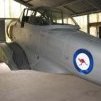
.thumb.jpg.62d1d69fed1f32364417cb1f9cdeb009.jpg)
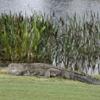

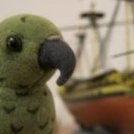

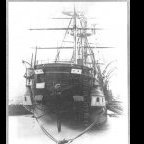
.thumb.jpeg.fc5d633a7b34428fcf19419a73d56d55.jpeg)
